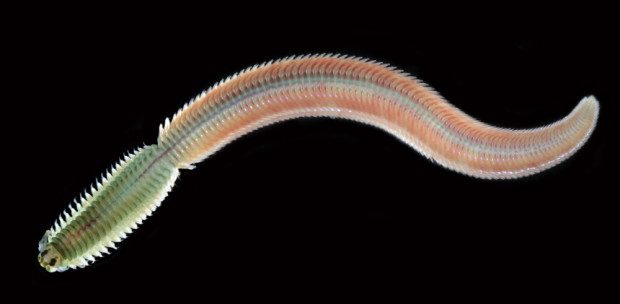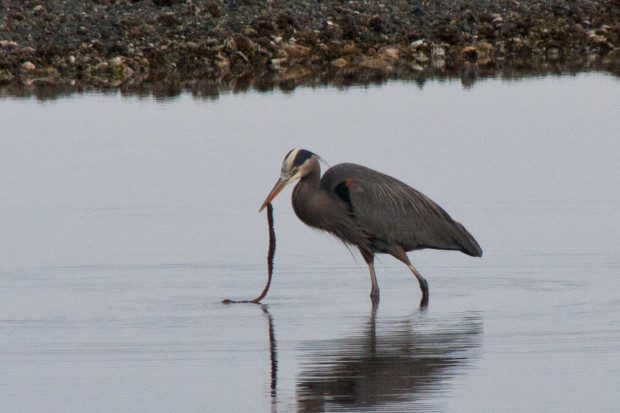Mike Morrell Reports:
Two interesting observations on the monthly Coastal Waterbird Survey this morning at Fillongley/Cable Beach with two other Denman birders.
When we arrived at the beach adjacent to Mabel Rd at about 7AM as the tide neared high slack, there was a flock of about 15 Horned Grebes within 30m of shore, and just up the beach there was a similar-sized flock of Common Mergansers also close inshore. John noticed several eel-like creatures swimming near the surface, and we soon figured out that we were in the midst of a mass spawning of Polychaete segmented worms, probably of the family Nereidae. These are the multi-legged, burrowing segmented worms we find burrowing in gravelly beaches like Fillongley.

When it’s time to spawn, the rear portion of the worm’s body develops mature gonads and eventually breaks off from the forward part and swims to the surface, along with others from the population in a co-ordinated spawning event. The swimming reproductive parts (75 – 100mm long, called epitokes) swim near the surface, release eggs and sperm, and die. The weakly swimming epitokes, jammed with rich sex cells, are easy prey for the birds.
Later in the morning near the campground we saw an adult Peregrine Falcon cruising low over the beach along the water’s edge. It passed close overhead at about 20m altitude—one of my closest views ever of this species. It is always an event to see a Peregrine; I see maybe one a year on Denman. Mike
Dennis Forsyth adds:
Isn’t nature wonderful? Bizarre? I remember watching this Heron pulling one of these out of the mud on the lease at Cable Beach a few years back. And, fortunately, I had Mike available to explain the whole thing to me. Dennis


